The Story of Culture and Arts
- Image resource of Korean history
- Documents from History TextBooks
- Culture & Art Stories from Korean History
- Culture & Art Stories from Korean History - Korean
- National Institute of Korean History
- History net
- About the site
- Introduce
-
Numerous topics related to Korean culture and art are mentioned in middle and high school national history textbooks, but most of them are briefly described by era, making it difficult to understand their concepts, transition processes, and characteristics.
<Culture & Art Stories from Korean History> produces and provides video materials based on expert commentary on the flow, change process, characteristics and characteristics of each major topic in the field of culture and art in Korean history.

Scenario
Here we have the painting Siwangdo, depicting the ten kings who judge the dead. In the Buddhist view of the afterlife, humans are judged by ten kings in succession for the three years following their encounter with the Messenger of Death. Before the dead meet the ten kings, they must first meet with the Messenger of Death. Dressed in comfortable drawstring pants and wearing a hat with two pointed ears, he is accompanied by his horse to swiftly carry the dead to the underworld. This image of death’s messenger is very different from our modern one.
The afterlife envisioned by the people of the Joseon period can be seen in such paintings as the Siwangdo or Sajado. Paintings such as these expressing the Buddhist universe are called bulhwa. Bulhwa were not only used to dignify a temple but were also an easy way to explain profound and obstruse Buddhist doctrines. From the Three Kingdoms period to the Goryeo period, many bulhwa were murals, painted directly on Buddhist temple walls. However, in the Joseon period, they became paintings hung on the walls of altars. The term “taenghwa,” meaning “scroll-style Buddhist painting,” is now used to refer to this style of bulhwa.
Taenghwa and the Three Altars
The interior temple hall layout we commonly see today was established during the late Joseon period. Temples heavily damaged during many wars were later reconstructed or restored. At the time, sending off ceremonies for the dead were actively held. Temples were altered to accommodate these large crowds. Taenghwa were used as a major medium as both the temple hall’s interior and exterior were used for prayers and rituals. Taenghwa were assigned to altars, upper, middle, or lower, according to their theme and the hierarchy of Buddhas.
The main hall was the starting point of these three positions. Taenghwa on the wall of the upper or main altar were called hubulhwa or hubultaeng, meaning “painting behind the Buddha statue.” The themes of upper-altar taenghwa were set based on the relationship with the hall and the enshrined Buddha. The Yeongsanhoesang-do painting of the Sakyamuni Buddha is hung in Daeungjeon Hall, while the Amitabulhoe-do painting is hung in the hall of Amitabha Buddha.
Middle-altar paintings were hung on a hall’s Eastern and Western walls. These paintings were hung for practical rituals. The themes of middle-altar paintings varied depending on the event. The Samjangbosal-do was painted to invoke the deities during the Water and Land Ceremony. The Jijangsiwang-do was used for the ritual of paying off the price of punishment due after death. The Sinjung-do was put up for daily services to honor the deities. All three of these paintings were designated middle-altar paintings. The Sinjung-do painting was so popular that there wasn’t a temple in Korea without one.
Lower-altar paintings depicted the final stage of the dead’s journey to nirvana after having earned the merits detailed at the other two altars. Usually, Gamno-do paintings were put up to honor the souls of those who had passed on.
Gwaebul-style Taenghwa
Buddhist rituals and prayer services were generally held in the central hall. But they might extend into the grounds outside the hall when the turnout was large. The Korean phrase “yadan beobseok”, which describes a loud and noisy scene, originates from these outdoor services. Outdoor services with that many participants require massive paintings. These paintings were called gwaebul-taeng, or gwaebul. Gwaebul could reach sizes of up to 10 meters across. Only 120 confirmed gwaebul exist today. The oldest is the Sejon gwaebultaeng of Jungnimsa Temple, painted in 1622. This majestic painting depicts the Sakyamuni Buddha sitting cross-legged with a golden halo and surrounded by a rainbow cloud.
The Seokgamoni gwaebul at Magoksa Temple in Gongju stands 11 meters tall. The painting’s massive dimensions are overwhelming. 34 congregants listen to the teachings of the Sakyamuni Buddha, adorned with a splendid crown and holding a lotus flower. The Magoksa Temple gwaebul is considered a masterpiece of the second half of the 17th century due to the peonies merging with the halo, the bright and soft colors, and the smooth brushwork.
Taenghwa and Monk Artists
Buddhist paintings are not the work of just one person. As few as two or three artists, and as many as dozens, could be involved in the painting process. In the late Joseon period, Buddhist monks, called hwaseung or “painting monks”, were charged with creating bulhwa.
These hwaseung were both practicing monks and outstanding artists. They were responsible for the flourishing of Buddhist artwork in the Joseon period. They worked all over the country, centering around major temples, but were often invited to smaller temples to create paintings for them. For the Simyuknahan-do painting at Namjangsa Temple, some hwaseung active in Seoul and Gyeonggi province traveled to Gyeongsang province and collaborated with the local monk artists to complete the painting. At first glance, both sides seem similar. But, the trees in the background and the objects surrounding the arhats show the differences between the Seoul and southern regional styles.
When creating a Buddhist painting, the most skilled painter, or su-hwaseung, would lead the group of artists. This lead artist is called a geumeo. or dohwasa. Little is known about the lives of the hwaseung, but we can see what they were like through autobiographical works left by the painters themselves from the late Joseon period. The su-hwaseung Chukyeon introduced Western painting techniques such as shading to Buddhist painting. He painted portraits of other monks with his faint signature also in the painting. The late Joseon period’s most prominent su-hwaseung, Seokong Cheolyu, left a rare self portrait.
The job of sketching in Buddhist painting is called chulcho. Once the sketch is created, it is then colored to complete the painting. Hwaseung used these sketches or redrew other sketches made by their predecessors. This allowed the bulhwa painting style to be continuously passed on.
Epilogue
Let us return to the story of the Messenger of Death. After being dragged away by the Messenger, the dead now stands before the fifth king, Yamarāja. In the hall of the fifth king, there is a mirror that shows the dead all the sins they committed in life. When facing the mirror, the dead sees a figure holding an axe and a cow. This means they have committed the sin of killing a living being. The Siwang-do painting, with its contrasting depiction of a terrifying hell and a peaceful paradise, may have inspired viewers to follow the righteous path and eschew evil. While these paintings are objects of faith, they also provide the viewer a brief moment for self-reflection. Like the Karma mirror, they show us how we should live our lives.
Fine Arts & Crafts
18 films-
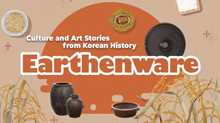 Earthenware08:28
Earthenware08:28 -
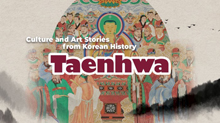 Taenghwa, or Buddhist Paintings in the Joseon Period08:36
Taenghwa, or Buddhist Paintings in the Joseon Period08:36 -
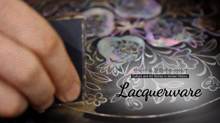 Lacquerware09:04
Lacquerware09:04 -
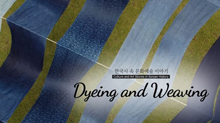 Dyeing and Weaving08:21
Dyeing and Weaving08:21 -
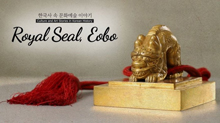 Royal Seal, Eobo07:53
Royal Seal, Eobo07:53 -
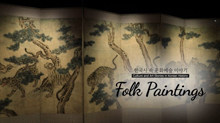 Folk paintings07:49
Folk paintings07:49 -
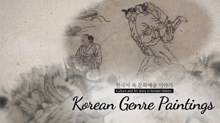 Korean Genre Paintings10:05
Korean Genre Paintings10:05 -
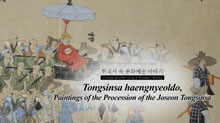 Paintings of the Procession of the Joseon Tongsinsa10:09
Paintings of the Procession of the Joseon Tongsinsa10:09 -
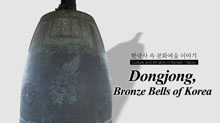 Dongjong, Bronze Bells of Korea08:50
Dongjong, Bronze Bells of Korea08:50 -
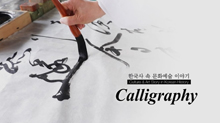 Calligraphy08:32
Calligraphy08:32 -
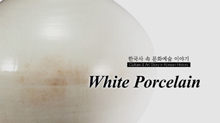 White Porcelain08:18
White Porcelain08:18 -
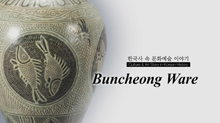 Buncheong Ware07:48
Buncheong Ware07:48 -
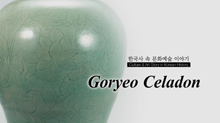 Goryeo Celadon07:54
Goryeo Celadon07:54 -
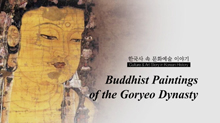 Buddhist Paintings of the Goryeo Dynasty07:57
Buddhist Paintings of the Goryeo Dynasty07:57 -
 Clay Figures, Figurines07:01
Clay Figures, Figurines07:01 -
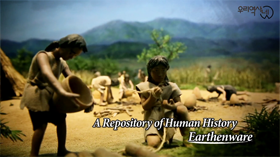 Clay Earthenware06:05
Clay Earthenware06:05 -
 Paintings of the Joseon Dynasty08:09
Paintings of the Joseon Dynasty08:09 -
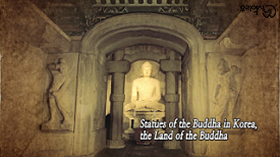 Statues of the Buddha in Korea09:03
Statues of the Buddha in Korea09:03

